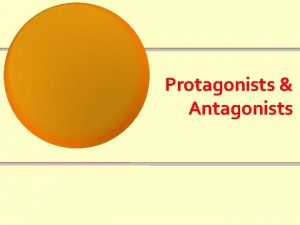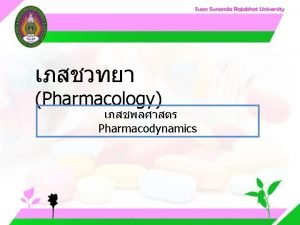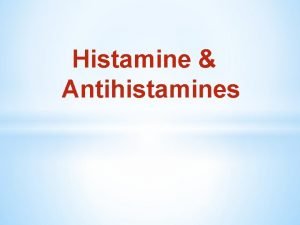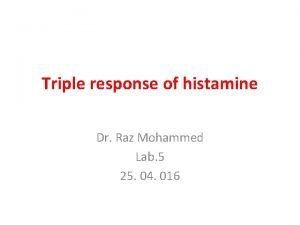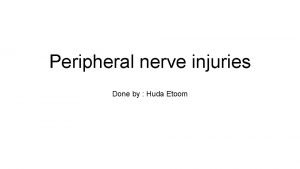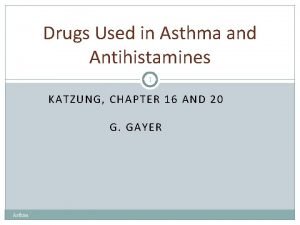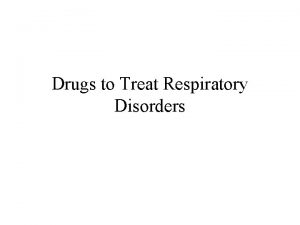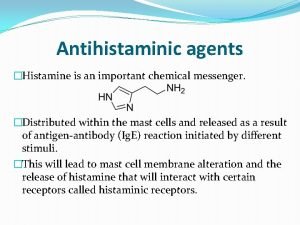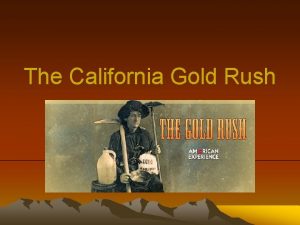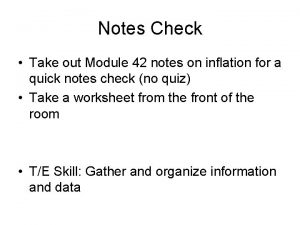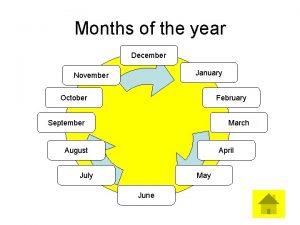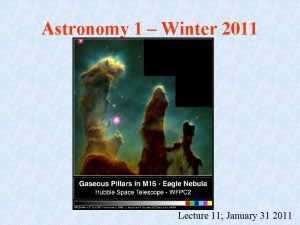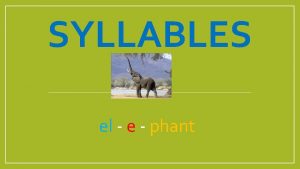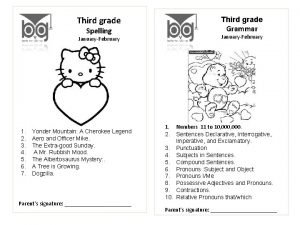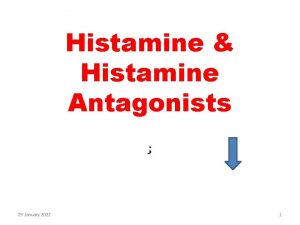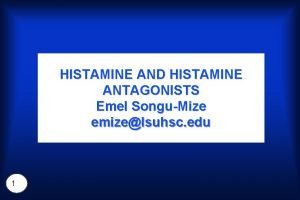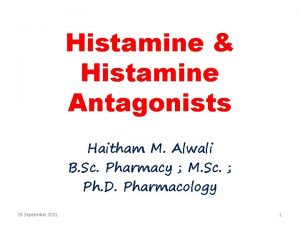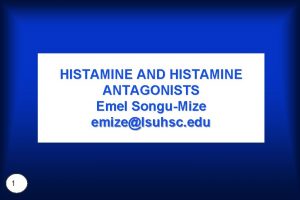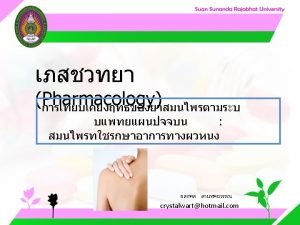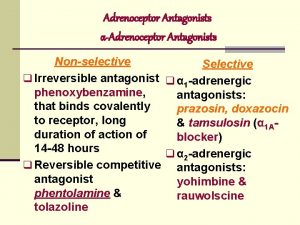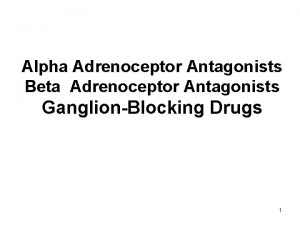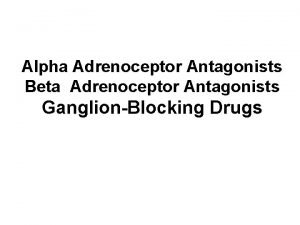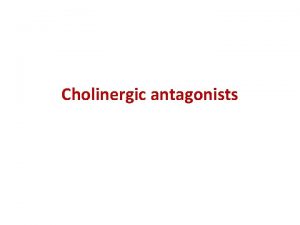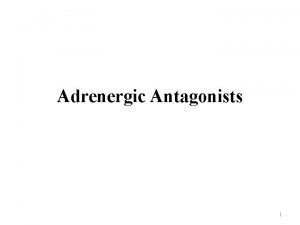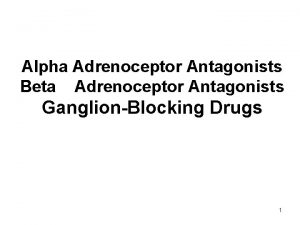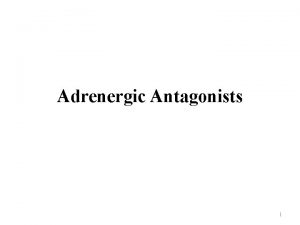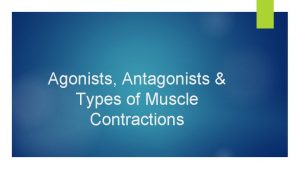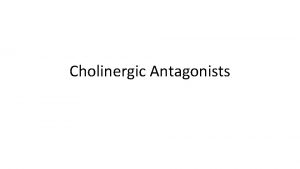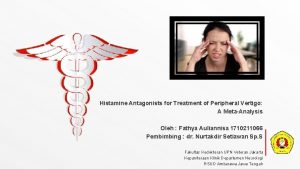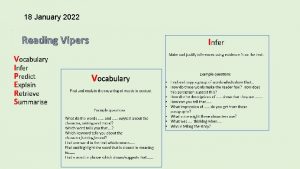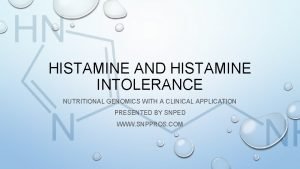Histamine Histamine Antagonists 26 January 2022 1 Histamine






















- Slides: 22

Histamine & Histamine Antagonists ; 26 January 2022 1

Histamine: • It is not a drug but is important due to its physiological and pathophysiological actions. Therefore, drugs that inhibit its release or block its receptors have therapeutic value. • is an endogenous substance synthesized, stored and released in (a) mast cells, which are abundant in the skin, GI, and the respiratory tract, (b) eosinophils in the blood, and (c) some neurons in the CNS and peripheral NS 26 January 2022 2

Pathophysiological Actions of Histamine • Cellular mediator of immediate hypersensitivity reaction and acute inflammatory response • Anaphylaxis • Seasonal allergies • Duodenal ulcers • Systemic mastocytosis • Gastrinoma (Zollinger-Ellison Syndrome) 26 January 2022 3

Ig. E - Mediated Releasers • Food: eggs, peanuts, milk products, grains, strawberries, etc • Drugs: penicillins, sulfonamides, etc • Venoms: fire ants, snake, bee, etc • Foreign proteins: nonhuman insulin, serum proteins, etc 26 January 2022 4

Non-immune Releasers • Morphine and other opioids, i. v. • Aspirin and other NSAIDs in some asthmatics • Vancomycin, i. v. (Red man syndrome), polymixin B • Some x-ray contrast media • Succinylcholine, tubocurarine 26 January 2022 5

26 January 2022 6

Clinical Symptoms Associated With Histamine Release • mild/cutaneous • erythema, urticaria, and/or itching • mild to moderate • skin reactions, tachycardia, dysrhythmias, moderate hypotension, mild respiratory distress • severe/anaphylactic • severe hypotension, ventricular fibrillations, cardiac arrest, bronchospasm, respiratory arrest 26 January 2022 7

Receptors: Distribution and Function • H 1 – Smooth muscle, endothelium, CNS. Bronchoconstriction, vasodilation, separation of endothelial cells, pain and itching, allergic rhinitis, motion sickness. • H 2 – gastric parietal cell, vascular s. m. cell, basophils. Regulate gastric acid secretion, It also has a cardiac stimulant effect. A third action is to reduce histamine release from mast cells—a negative feedback effect. • H 3 - CNS cells, and some in peripheral NS. Presynaptic, feedback inhibition of histamine synthesis and release. • H 4 - Highly expressed in bone morrow and white blood cells. Mediate mast cell chemotaxis 26 January 2022 8

Triple Response of Lewis Subdermal histamine injection causes: • Red spot (few mm) in seconds: • direct vasodilation effect , • H 1 receptor mediated • Flare (1 cm beyond site): • axonal reflexes, indirect vasodilation, and itching, H 1 receptor mediated • Wheal (1 -2 min) same area as original spot, edema due to increased capillary permeability, H 1 receptor mediated 26 January 2022 9

Histamine H 1 - Antagonists • First Generation: • Sedating • Second Generation: • Nonsedating 26 January 2022 10

First Generation Agents • Examples • Ethanolamines: Diphenhydramine (Allermine) Clemastine (Tavagyl) • Dimethindene ( Fenistil ) • Ethylenediamine: Triprolidine ( Actifed) • Alkylamine: Chlorpheniramine (Histadin) • Phenothiazine: Promethazine (Phenergan) • Piperazines: Hydroxyzine (Atarax) Cyclizine ; Meclizine (Antivert) 26 January 2022 11

First Generation Agents • Uses: • Adjunctive in anaphylaxis and other cases where histamine release can occur (H 2 antagonist, and epinephrine must also be used in anaphylaxis) • Antiallergy (allergic rhinitis, allergic dermatoses, contact dermatitis) • Sedative/sleep aid ( Diphenhydramine) • To prevent motion sickness (meclizine, cyclizine) 26 January 2022 12

• Uses (cont’d) • Antiemetic: prophylactic for motion sickness (promethazine) • Antivertigo (meclizine) safe in pregnancy • Local anesthetic: (diphenhydramine) • Antitussive (diphenhydramine) 26 January 2022 13

First Generation Agents • Adverse Effects: • Sedation (Paradoxical Excitation • in children) • Dizziness • Fatigue • Tachydysrhythmias in overdose - rare • Allergic reactions with topical use • Peripheral antimuscarinic effects Ø dry Mouth Ø blurred Vision Ø constipation Ø urinary Retention 26 January 2022 14

First Generation Agents • Drug interactions: • Additive with classical antimuscarinics • Potentiate CNS depressants vopioids vsedatives vgeneral and narcotic analgesics valcohol 26 January 2022 15

First Generation Agents • Pharmacokinetics: • All H 1 blockers are active by the oral route. Several are promoted for topical use in the eye or nose. • Cross BBB and placenta • Most are metabolized extensively in the liver (induce hepatic microsomal enzymes). • Half-lives of the older H 1 blockers vary from 4 to 12 h. 26 January 2022 16

Second Generation Agents • Examples • • • Uses Cetirizine (Zyrtec) Antiallergy Fexofenadine (Tel-fast) Loratadine (Clarinase) Desloratadine (Aerius ) Azelastin (Intranasal Spray) 26 January 2022 17

Second Generation Agents • Adverse effects: • in general, these agents have a much lower incidence of adverse effects than the first generation agents. • terfenadine (seldane) and astemizole (hismanal) were removed from the market due to effects on cardiac K+ channels - prolong QT interval (potentially fatal arrhythmia “torsades de pointes”) • fexofenadine is active metabolite of terfenadine 26 January 2022 18

Second Generation Agents • Adverse effects: • Cetirizine appears to have more CNS actions (sedative) than fexofenadine or loratadine. recommended that cetirizine not be used by pilots. • Erythromycin and ketoconazole inhibit the metabolism of fexofenadine and loratadine in healthy subjects, this caused no adverse effects. 26 January 2022 19

Second Generation Agents • Pharmacokinetics: • Cetirizine , loratadine , fexofenadine well absorbed and are excreted mainly unmetabolized form. • They are less lipid soluble than the firstgeneration agents • Have half-lives of 12– 24 h. • They induce Cyt P 450 liver enzymes 26 January 2022 20

HISTAMINE H 2 ANTAGONISTS A. Classification and Prototypes • Four H 2 blockers are available; cimetidine ( Tagamet)is the prototype. • Ranitidine (Zantac), famotidine, and nizatidine differ only in having fewer adverse effects than cimetidine. • They are orally active, with half-lives of 1– 3 h. • All four agents are available in oral over-the counter formulations. 26 January 2022 21

Clinical Use § In acid-peptic disease, especially duodenal ulcer, these drugs reduce nocturnal acid secretion, § Intravenous H 2 blockers are useful in preventing gastric erosions and hemorrhage that occur in stressed patients in intensive care units. § In Zollinger-Ellison syndrome, which is associated with gastrinoma and characterized by acid hypersecretion, peptic ulceration, gastrointestinal bleeding, and diarrhea, but very large doses are required; proton pump inhibitors are preferred. § Used in gastroesophageal reflux disease (GERD), but they are not as effective as proton pump inhibitors 26 January 2022 22
 Spinohumeral
Spinohumeral Short story terms
Short story terms Metaphors romeo and juliet
Metaphors romeo and juliet Protagonist antagonist and agonist
Protagonist antagonist and agonist What is an agonist
What is an agonist Static antagonist
Static antagonist Histamine
Histamine Histamine triple response
Histamine triple response Histamine test brachial plexus
Histamine test brachial plexus Bronchoconstrictor drugs ppt
Bronchoconstrictor drugs ppt Bronchoconstrictor drugs ppt
Bronchoconstrictor drugs ppt Antinausia
Antinausia 25 january 1759
25 january 1759 January 24th 1848
January 24th 1848 Respect traits
Respect traits Arvod cannot find work as a mall santa in january.
Arvod cannot find work as a mall santa in january. He was born in salzburg austria on january 27 1756
He was born in salzburg austria on january 27 1756 January february march april may
January february march april may December november october
December november october Spatial january
Spatial january Syllables in jellyfish
Syllables in jellyfish January february spelling
January february spelling 9 months before january 26 2009
9 months before january 26 2009



